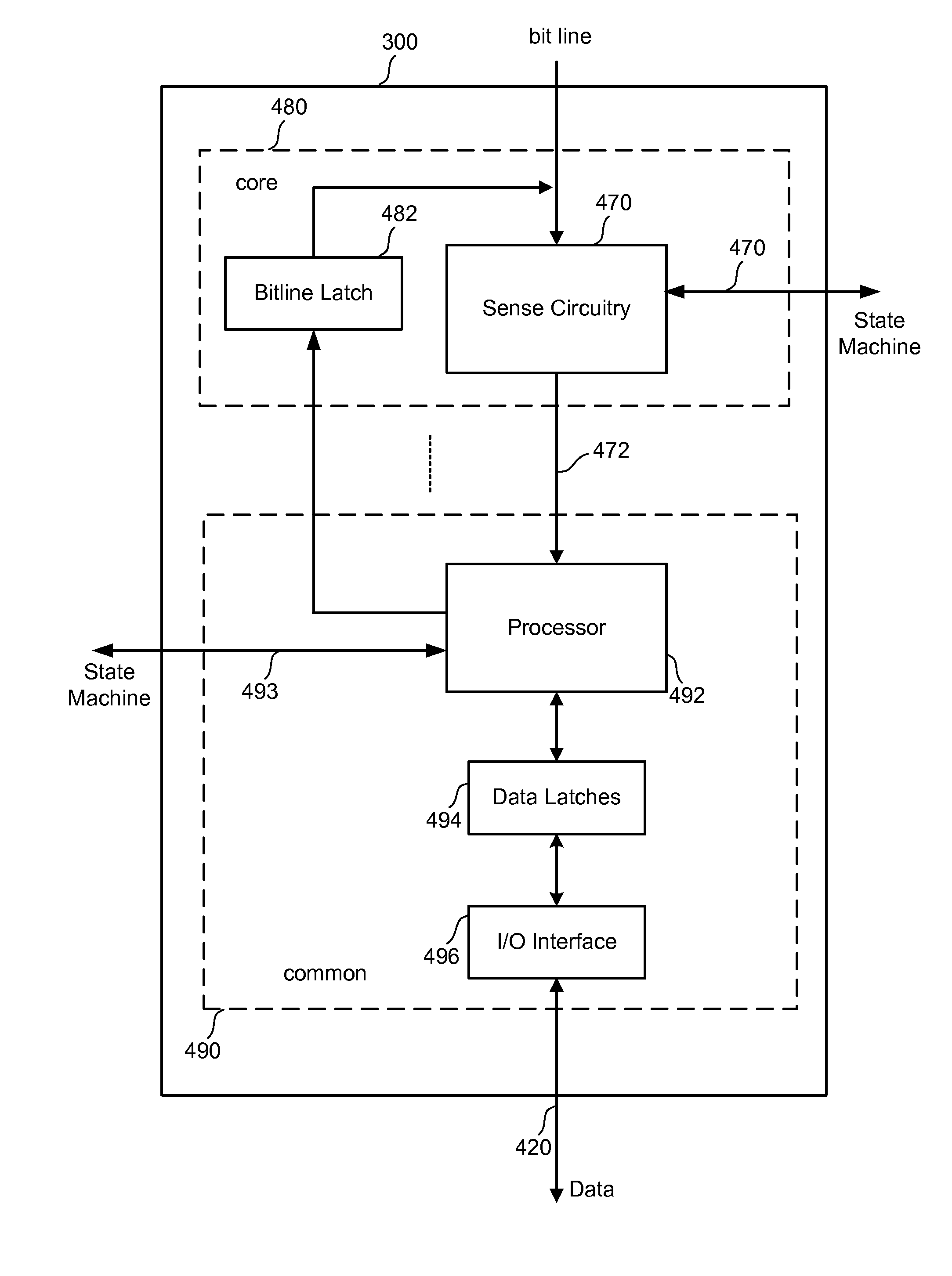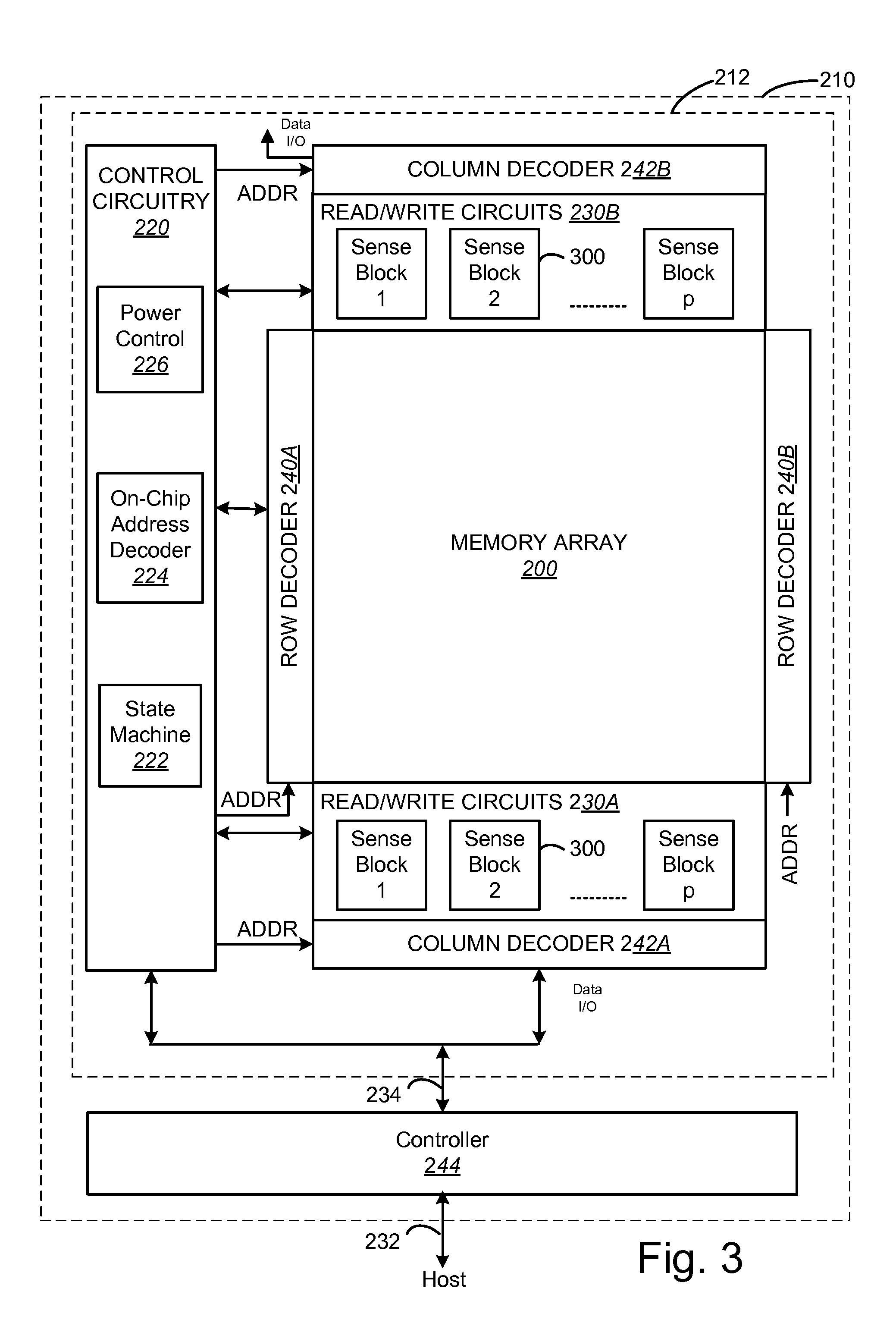Non-volatile memory programming data preservation
a programming data and non-volatile technology, applied in the direction of memory adressing/allocation/relocation, digital storage, instruments, etc., can solve the problems of affecting the performance of the program, and affecting the accuracy of the program
- Summary
- Abstract
- Description
- Claims
- Application Information
AI Technical Summary
Benefits of technology
Problems solved by technology
Method used
Image
Examples
Embodiment Construction
[0036]Described herein are a systems and methods by which data can be preserved internally or externally to a memory circuit for verification purposes, such that if a programming operation for that data fails on a certain region of the memory circuit, the data preserved through one or more copies can be programmed elsewhere on the memory circuit. In some embodiments, the failed region of the memory circuit, which can be a page, a block, one or more word lines, or region of some other size, can be marked to prevent future programming attempts. If the programming operation was successful, then all or a portion of the preserved data can be release from the redundant storage.
[0037]For example, in the case of detecting possible short circuits between word lines (or other defects), some embodiments of the present technology may preserve the data on pages physically close to the page(s) being programmed. This data may be kept on external data latches, controller RAM, other locations on the...
PUM
 Login to View More
Login to View More Abstract
Description
Claims
Application Information
 Login to View More
Login to View More - R&D
- Intellectual Property
- Life Sciences
- Materials
- Tech Scout
- Unparalleled Data Quality
- Higher Quality Content
- 60% Fewer Hallucinations
Browse by: Latest US Patents, China's latest patents, Technical Efficacy Thesaurus, Application Domain, Technology Topic, Popular Technical Reports.
© 2025 PatSnap. All rights reserved.Legal|Privacy policy|Modern Slavery Act Transparency Statement|Sitemap|About US| Contact US: help@patsnap.com



